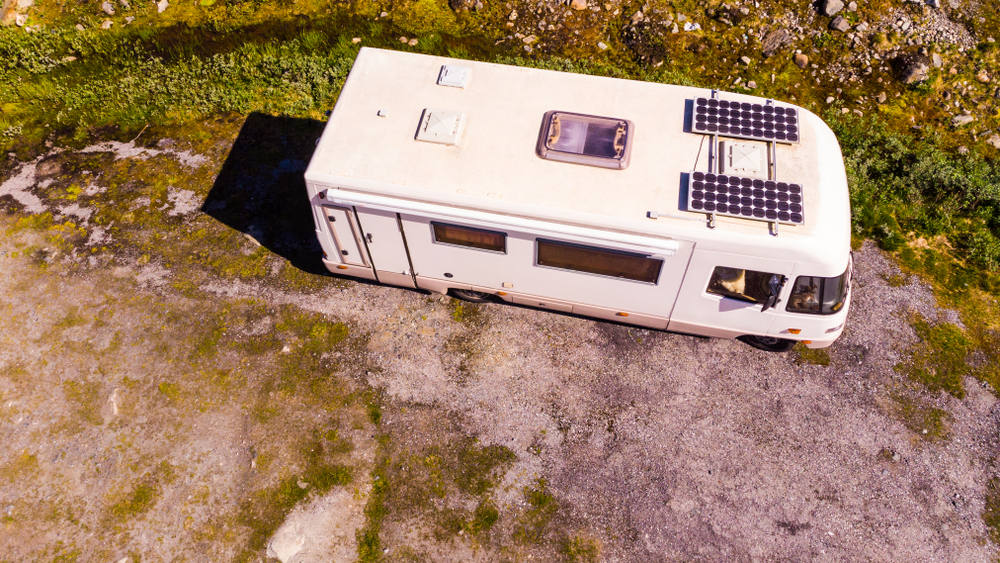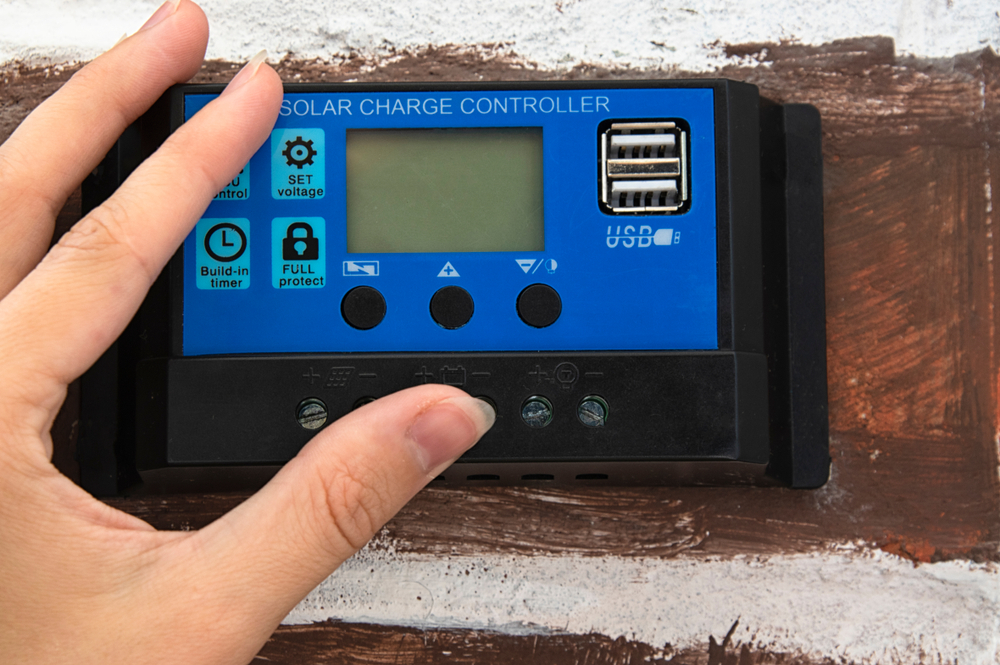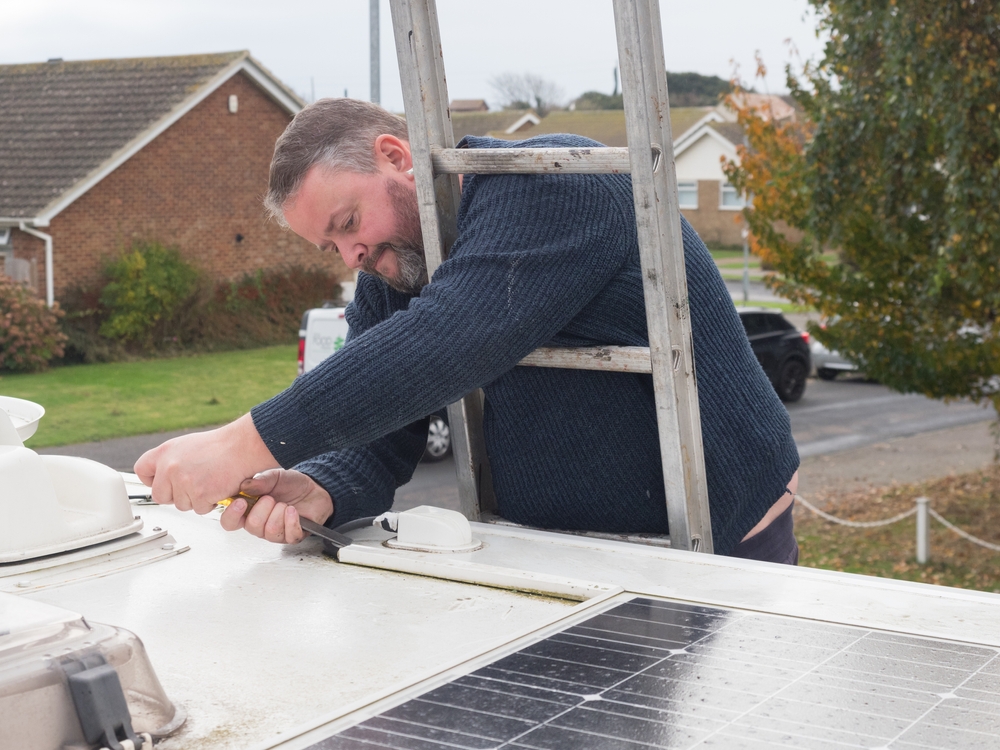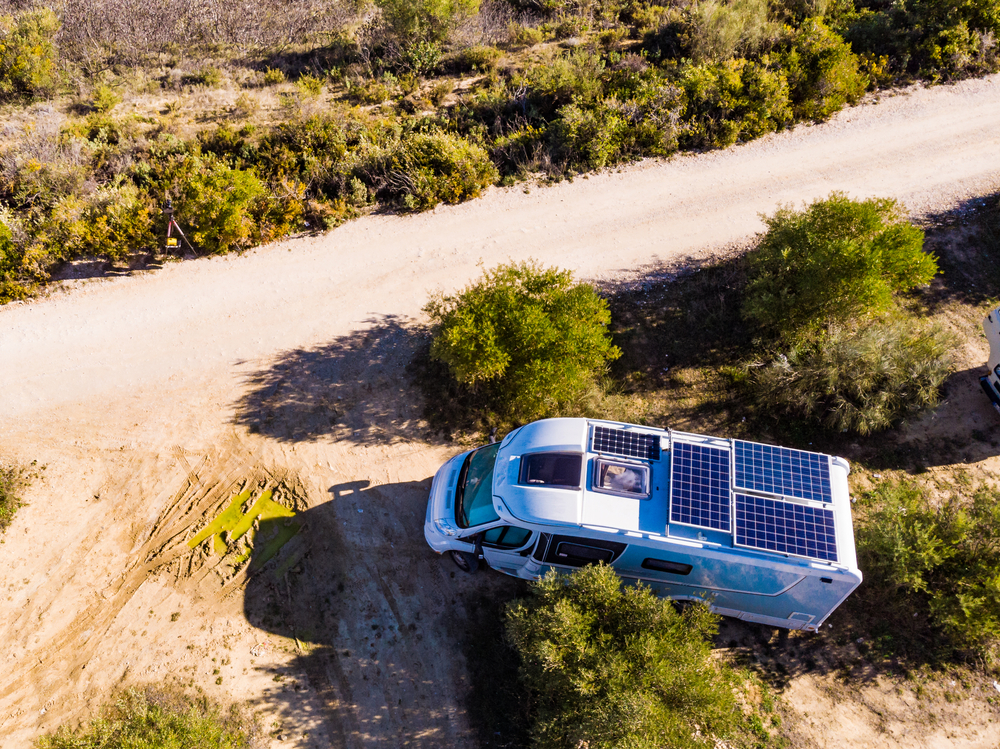Last Updated on November 18, 2022 by admin_hunter
You have likely seen one of those beautiful RVs with multiple solar panels; they’re all the rage right now. You can see them on the road, in parks, beaches, deserts, and campgrounds throughout the country.
Since they are an interesting phenomenon to watch, curiosity about RV living off the grid might have gotten a hold of you, prompting you to want to know how to install a solar powered generator for your RV.
We have the answers to your questions about solar powered generators so you can learn how to equip your recreational vehicle with a functional portable solar generator. But before we dive in, let’s go over some basics about a portable solar power system.
Considerations Before Equipping Your RV with a Solar Powered Generator

Before you go all out and install a solar powered generator on your RV, be sure to consider the following factors:
Number of Panels the RV Needs
The number of panels an RV needs for a solar powered generator varies based on three major factors:
- The power requirements of the appliances and devices you will use in the RV. The more power they require, the higher the number or the bigger the size of the solar energy panels you must install.
- How much power you’ll be using daily. More power usage requires plenty of solar panels.
- The capacity of each solar panel. If you buy low-capacity panels, you’ll need more of them to produce enough power, which may not be feasible for an RV because of the limited amount of space available.
Type of Solar Equipment the RV Already Has
If you are buying a solar-ready RV, a solar generator professional can check if it has all the required components and whether they are of the correct type and quality. You must replace any missing or damaged items before hitting the road.
You should also check the wiring on the solar power system, especially if a DIYer installed the portable solar generator. Most DIYers are known to err in the wiring by using low-gauge wires.
Use at least 10-gauge wires for power-hungry electrical appliances and devices to ensure adequate supply and proper distribution of optimum power from the solar panels to the battery bank.
Compatibility of Components
No products found.
If you’re going to equip the RV with a solar generator from scratch, it’s advisable to buy all the required components simultaneously to ensure they are all compatible. It’s even better to buy a complete solar kit from the same manufacturer whenever possible. So, whether you’re using a Jackery solar generator or a Delta Pro, look for a solar kit with everything you need.
RV Solar Powered Generator Components
The components of a solar generator for an RV are the same as the ones used in any solar generator system for off-grid living or power backup purposes.
1. Solar Panels
The solar panels capture sunlight and convert it to electrical energy channeled through wires to the battery or batteries via the charge controller.
RV solar panels can be rigid, portable, or flexible. The type you use determines the mounting system you’ll use for the panels.
Regardless of the type used, the panels should fit together to make it easy to apply a sealant along panel edges and bracket edges to avoid corrosion problems.
Rigid solar panels are more efficient and durable than their counterparts. They are also heavier. These panels can provide 250-300 watts of solar electricity.
You can install them by affixing them to the roof on positions of your choice using brackets and corrosion-resistant screws.
Flexible RV solar panels are ideal for molded RV roofs (not flat) and can provide up to 150 watts of solar power.
Portable solar panels for RVs also produce up to 150 watts. You can place them anywhere on the RV to harness solar energy even when the vehicle is in shade and the roof is shielded from the sun.
Whichever type you use, the mounting process should either be flat or one that allows you to position the panels at an angle toward the sun. The second option is better.
2. Solar Battery/Battery Bank
While you can use a single solar battery, you may need several of them to form a battery bank for extra battery capacity. The standard 12-volt lithium-ion solar battery can run small DC-powered appliances in an RV, such as lights and fans.
The batteries are installed inside the RV and can be charged by solar panels.
3. Solar Charge Controller

The charge controller for an RV solar generator is installed inside the vehicle. It protects the battery from harm caused by overcharging and over-discharging.
4. Solar Inverter
Your RV solar power generator can do without the inverter if you only need it for DC. However, it’s a must if you intend to use AC-dependent appliances like microwaves.
5. Transfer Switch
The transfer switch is optional for an RV solar generator system, but it’s helpful when switching from battery power to shore power at a campground.
Steps for Installing an RV Solar Powered Generator

Here’s a high-level overview of the steps to follow to equip your RV with a solar generator.
It’s advisable to read the manufacturer’s installation manual. If you are not sure, you can always hire a professional installer.
- Install the solar panels on the roof using your preferred mounting method.
- Wire the panels by running the wires through the RV’s refrigerator vent if it’s accessible. If it isn’t, run them through the plumbing pipe or drill new holes if these two options are unavailable.
- Mount the charge controller and the inverter on a wall at a suitable location, as close to the batteries as possible.
- Connect the charge controller to the battery before you connect the assembly to the solar panels. Use a multimeter to ensure the polarity of the wires is correct before you connect to the panels.
- Connect the power inverter, ensuring that the negative and positive wires are aligned correctly.
To avoid sparking, you can cover the solar panels with a thick cloth shortly before you connect them to the controller-battery assembly to block them from receiving sunlight and producing power output until they’re all set up. Or you can connect them at night.
Once all the pieces are correctly connected, it’s time to enjoy free, eco-friendly, and renewable solar electricity from any location where sunlight is available. You did it! Now head out for a weekend of RV camping or a few weeks of RV living and see how your new portable power station works for you.

